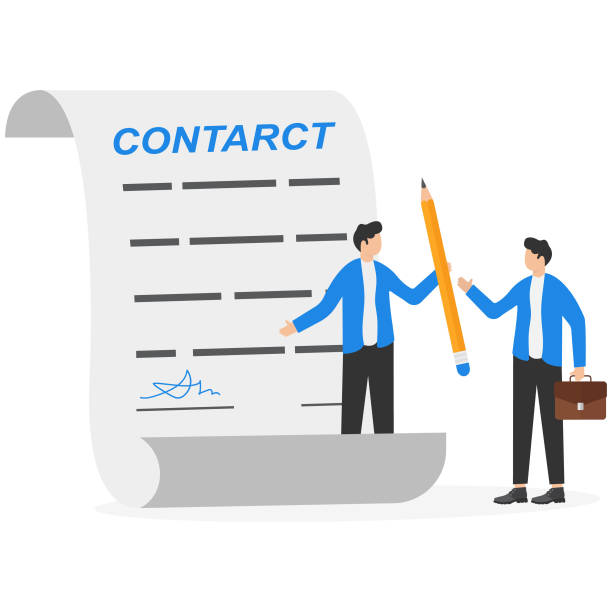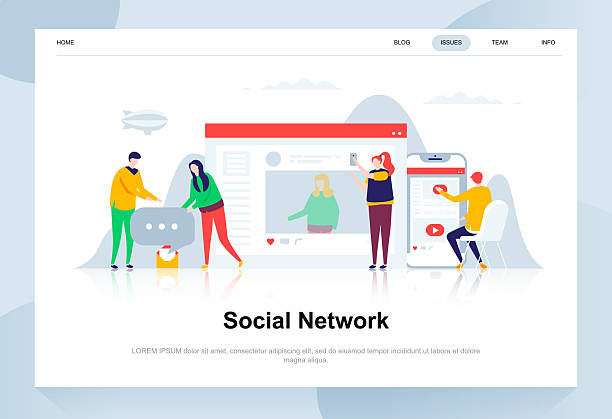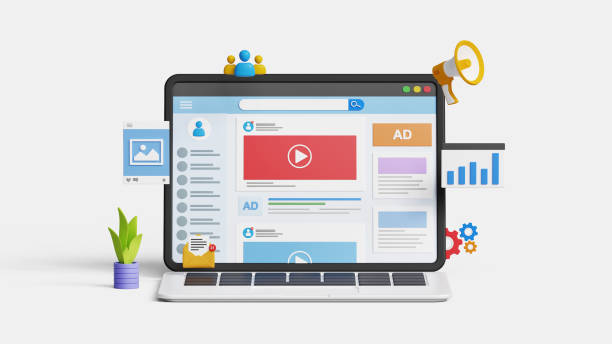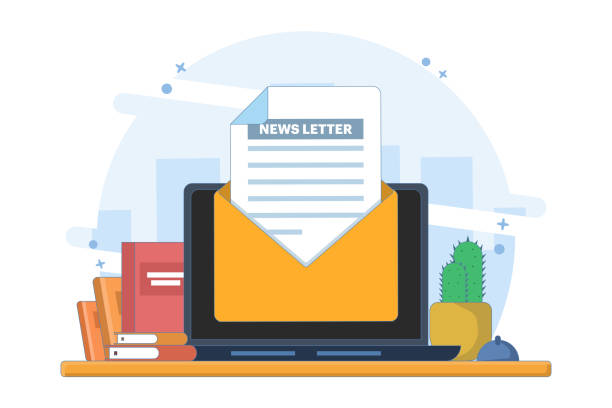Introduction to Secure Website Design and Its Importance

In today’s world, where a significant portion of daily activities has shifted to the online space, secure website design is no longer an option, but a vital necessity.
Website security not only means protecting user data and preventing unauthorized access but also includes business stability, brand reputation, and compliance with privacy laws.
With the increasing complexity of cyberattacks, every website, from a personal blog to a large e-commerce platform, must be protected against various threats.
Secure website design is a comprehensive approach that begins from the initial development stages and continues throughout the website’s lifecycle.
This approach includes technical, procedural, and human measures to minimize risks and vulnerabilities.
Today, the importance of #website_security, #data_protection, and #cyberattack_prevention has become more prominent than ever.
An insecure website can lead to loss of user trust, hefty legal penalties, and even business bankruptcy.
Therefore, any investment in secure website design is a fundamental step to ensure success and sustainability in the digital space.
Are you worried about losing customers because you don’t have a professional e-commerce website?
With e-commerce website design by Rasaweb, forget these worries!
✅ Significant increase in sales and conversion rate from visitor to customer
✅ Professional and user-friendly design that builds customer trust
⚡ Get free consultation from Rasaweb
Understanding Common Website Security Threats

To correctly implement a secure website design, we must first become familiar with the common threats and vulnerabilities in the web space.
Cyberattacks are becoming more complex and diverse day by day, and understanding these threats is the first step in preventing and combating them.
Among the most common attacks are SQL Injection attacks, where an attacker gains access to the database by injecting malicious SQL code into website inputs.
Another is Cross-Site Scripting (XSS), which allows an attacker to inject malicious scripts into web pages visible to other users.
Brute Force attacks to guess passwords by trying all possible combinations, and Distributed Denial of Service (DDoS) attacks that overload the server with a large volume of traffic, causing service disruption, are also serious threats.
Phishing and social engineering also open the way for attackers by tricking users into revealing sensitive information.
Also, let’s not forget that many vulnerabilities arise from outdated and unpatched software (such as content management systems or plugins).
Therefore, one of the key principles in secure website design is continuous updates and patching of software to protect against the latest known vulnerabilities.
Analyzing these threats and understanding their mechanisms provides a solid foundation for creating a secure web infrastructure.
Principles of Secure Coding and Development in Website Design

One of the main pillars of any secure website design is adherence to secure coding and software development principles.
This approach begins from the very start of the design and development process and means writing code that is resilient to cyberattacks.
The first and most important principle is rigorous Input Validation.
Any data received from the user must be validated and sanitized before processing to prevent the injection of malicious code.
The use of standard, widely tested security functions and frameworks is highly recommended instead of writing security code from scratch.
For example, using Prepared Statements when interacting with the database is the best way to prevent SQL Injection.
Furthermore, proper Session Management and Authentication are of high importance.
Strong encryption for passwords (such as using one-way hashing functions with salt) and implementing two-factor authentication mechanisms significantly increase the security of user accounts.
Secure website design also includes Secure Error Handling to prevent sensitive system information from being disclosed in error messages.
Below is a table of the initial checklist for secure website development:
| Security Principle | Brief Description | Importance |
|---|---|---|
| Input Validation | Reviewing and sanitizing all user input data. | Very High |
| Strong Authentication | Using password hashing and two-factor authentication. | Very High |
| Session Management | Generating secure, short-lived session tokens. | High |
| Error Handling | Hiding sensitive information in error messages. | Medium |
| Use of HTTPS | Encrypting traffic between the user and the server. | Very High |
Secure Server and Web Hosting Configuration

In addition to secure coding, secure website design requires special attention to server configuration and the web hosting environment.
Even the most securely written code will be vulnerable if placed on a weakly configured server.
The first step in this regard is choosing a reputable and reliable web hosting provider that adheres to high security standards.
This includes strong firewalls, Intrusion Detection Systems (IDS), and protection against DDoS attacks.
After selecting a host, it is necessary to regularly update the server’s operating system and all installed software (such as Apache or Nginx web server, MySQL or PostgreSQL database, and programming languages like PHP or Python).
Removing unnecessary services and applications that could be entry points for attackers is also of high importance.
Furthermore, web server security settings must be carefully configured; for example, disabling directory listing, restricting access to files and folders, and using HTTPS to encrypt all traffic between the user and the server.
Server firewall configuration and setting precise rules for allowing or denying traffic are other crucial measures.
In the context of secure website design, Access Control is also very important; meaning that only authorized users and services can access specific resources.
Continuous monitoring of server logs to identify suspicious activities should also be part of the daily routine.
This comprehensive approach to server configuration adds another layer of protection to secure website design.
Do you dream of a thriving online store but don’t know where to start?
Rasaweb is your comprehensive e-commerce website design solution.
✅ Attractive and user-friendly design
✅ Increased sales and revenue⚡ Get free consultation
Data Protection and Information Encryption

In the information age, data protection, especially sensitive user information, is one of the most important aspects of secure website design.
Encryption plays a pivotal role in this regard, ensuring that even if data is accessed unauthorizedly, the attacker cannot misuse it.
The first step is to use the HTTPS protocol with a valid SSL/TLS certificate.
This protocol encrypts all communications between the user’s browser and the website server, preventing information eavesdropping during transmission.
This not only enhances security but also helps improve SEO ranking.
In addition to in-transit encryption, at-rest encryption of data is also important; meaning that sensitive information stored in the database or server files must also be encrypted.
This can be achieved by using disk encryption capabilities or encrypting specific columns in the database.
Users’ personal information, such as name, address, phone number, and especially financial information (like credit card numbers), must be encrypted and managed with the highest security standards.
Compliance with regulations like GDPR in Europe or CCPA in California has become a global standard for user privacy protection and must be considered in secure website design.
Developing a data retention policy and transparently informing users about how their information is collected, stored, and used builds their trust and is an important part of the commitment to secure website design.
The Importance of Security Audits and Penetration Testing

On the path to secure website design, merely implementing initial security measures is not enough; continuous review and evaluation are necessary.
Security Audits and Penetration Testing are vital tools for identifying weaknesses and vulnerabilities that may have been overlooked during the development process or emerged over time with updates.
A security audit is a systematic and comprehensive review of website code, server configuration, and security processes performed by independent experts.
This audit can include manual code review, automated vulnerability scanning, and security policy review.
Its purpose is to provide an accurate picture of the website’s security posture and identify areas that need improvement.
On the other hand, penetration testing is a simulated and controlled attack on a website performed by Ethical Hackers.
The main goal of penetration testing is to attempt to breach the system using methods and tools that a real attacker might employ.
This helps identify unknown vulnerabilities or how multiple vulnerabilities can be exploited simultaneously.
The results of penetration testing provide detailed reports of discovered weaknesses and practical solutions to fix them.
Regular scheduling of these tests, whether quarterly or annually, is crucial for maintaining a secure website design, as the cyber threat landscape is constantly changing.
These proactive measures provide a layer of assurance for users and website owners.
The Role of User Education and Awareness in Website Security

Despite all advanced technical measures in secure website design, the vital role of the human element cannot be overlooked.
Many successful cyberattacks are carried out through social engineering and deceiving users.
Therefore, educating and raising awareness among users, both end-users and internal staff, is an inseparable part of a comprehensive website security strategy.
Users should be familiar with basic cybersecurity concepts; such as the importance of using strong and unique passwords, identifying phishing emails and suspicious messages, and the dangers of clicking on unknown links.
Websites should encourage users to enable two-factor authentication (2FA) and provide sufficient information on how to activate and use it.
Also, on websites where users can upload files, the dangers of uploading malicious files should be highlighted, and security mechanisms for scanning and validating uploaded files should be implemented.
For internal staff who have access to website management systems, more specialized training on password policies, sensitive information management, and security protocols against cyberattacks is essential.
Secure website design not only means secure coding but also involves creating a cybersecurity culture among all individuals associated with the website.
An informed user is the best firewall against many cyberattacks.
Below is a guide table for educating users on maintaining online personal security.
| Training Topic | Description | Example/Key Point |
|---|---|---|
| Strong Password | Using a combination of uppercase and lowercase letters, numbers, and symbols. | Minimum 12 characters, avoid personal information. |
| Two-Factor Authentication (2FA) | Activating an additional security layer (SMS code, app). | Significantly increases account security. |
| Phishing Identification | Paying attention to sender’s address, suspicious links, and typos. | Never click on suspicious links. |
| Software Updates | Always keep your operating system and browser updated. | Security patches fix vulnerabilities. |
Security Incident Response and Recovery Plan

Even with the best secure website design measures, the possibility of security incidents is not completely zero.
Therefore, having an Incident Response Plan and Recovery Plan is vital for every organization and website.
This plan should include specific steps and defined responsibilities for responding to a security event, such as a breach, data loss, or DDoS attack.
The main goal of this plan is to minimize damage, quickly restore service, and learn from the incident to prevent its recurrence in the future.
An incident response plan usually includes the following stages: Preparation, Identification, Containment, Eradication, Recovery, and Post-Incident Review.
In the identification phase, tools and processes must be in place for rapid detection of intrusions and suspicious activities.
After identification, the goal is to contain the incident to prevent its spread.
Eradication involves completely removing the attacker and the vulnerability that led to the breach.
The recovery phase involves restoring systems to normal operational status and recovering data from secure backups.
Ensuring regular and encrypted backups of all website data and configurations is a critical component of the recovery plan.
These backups must be stored in a secure location separate from the main server.
Having a comprehensive incident response plan not only helps you maintain calm during a crisis but also demonstrates your commitment to secure website design and user protection.
Is your current e-commerce website design causing you to lose customers and sales?
Rasaweb is your solution with modern and user-friendly e-commerce website designs!
✅ Significant increase in conversion rate and sales
✅ Strong branding and building customer trust
⚡ Get free e-commerce website design consultation from Rasaweb!
New Trends and the Future of Secure Website Design

The cybersecurity landscape is a dynamic and evolving field.
As technology advances, penetration methods also become more complex, hence secure website design must keep pace with these developments.
Several emerging trends are taking shape that will impact the future of web security.
One of these trends is the use of Artificial Intelligence (AI) and Machine Learning (ML) in attack detection and prevention.
These technologies can identify unusual traffic patterns and predict attacks before they occur.
Blockchain technology also has significant potential for improving data security and authentication, especially in Web 3.0, which emphasizes decentralization.
API security (Application Programming Interfaces) has also gained increasing importance, as many modern websites are built on API communications with third-party services.
New authentication protocols like WebAuthn, which use hardware security keys, are moving towards completely eliminating passwords and can significantly increase security.
Furthermore, the increased use of Serverless and Microservices architectures introduces new security challenges that require specialized approaches for secure website design in these environments.
Awareness of these news and analytical trends and readiness to adapt to them are crucial for maintaining website security in the future.
These developments indicate that web security is not a destination, but a continuous journey of learning and improvement.
The Importance of Continuous Updates and Security Maintenance

As mentioned earlier, secure website design is not a one-time process but requires continuous attention and maintenance.
Even if your website was designed with the highest security standards at launch, new vulnerabilities are constantly discovered, and attackers find new methods of intrusion.
Therefore, regular Updates and Security Patches for all software used, from the server’s operating system and web server to the Content Management System (CMS), plugins, and code libraries, are of paramount importance.
Software and CMS developers (such as WordPress or Joomla) regularly release patches to address security vulnerabilities.
Immediately installing these updates can prevent many known attacks.
In addition to software updates, continuous monitoring of server logs, web traffic, and suspicious activities is also essential for secure website design.
Using security monitoring tools and Intrusion Detection/Prevention Systems (IDS/IPS) can help in faster identification of ongoing attacks.
Regular and automatic backups of all website data and configurations are also an essential part of security maintenance to allow for quick and complete recovery in case of an incident.
These maintenance measures help the website remain resilient against new threats and maintain a secure website design over time.
Frequently Asked Questions
| Number | Question | Answer |
|---|---|---|
| 1 | What does secure website design mean? | Secure website design refers to a set of measures and methods used to protect a website against cyberattacks, unauthorized access, data breaches, and other security threats. Its goal is to maintain the confidentiality, integrity, and availability of information. |
| 2 | Why is website security important? | Website security is vital for maintaining user trust, protecting sensitive information (such as personal and financial data), preventing financial losses, preserving brand reputation, and complying with legal regulations (like GDPR). A security breach can lead to loss of customers and heavy penalties. |
| 3 | What are some of the most common security attacks against websites? | The most common attacks include SQL Injection, XSS (Cross-Site Scripting), CSRF (Cross-Site Request Forgery), Brute Force, DDoS attacks, Broken Authentication, and Missing Function Level Access Control. |
| 4 | What is the role of an SSL/TLS certificate in website security? | An SSL/TLS certificate (which leads to an HTTPS address) is used to encrypt data exchanged between the user and the website server. This prevents eavesdropping or tampering with sensitive information such as passwords and credit card details during transmission and verifies the website’s authenticity. |
| 5 | How can SQL Injection attacks be prevented? | To prevent SQL Injection, Prepared Statements or ORM (Object-Relational Mapping) with validated parameters should be used. Additionally, strict filtering and validation of user inputs (Input Validation) and applying the principle of least privilege in the database are essential. |
| 6 | What is HTTP Strict Transport Security (HSTS) protocol and how does it help security? | HSTS is a web security policy that tells browsers to load the website only via an HTTPS connection, even if the user enters the address with HTTP. This prevents Downgrade attacks and cookie theft on public Wi-Fi networks. |
| 7 | What is the importance of regularly updating software and plugins in website security? | Regularly updating the Content Management System (CMS), plugins, themes, and other software components of the site is crucial to address discovered security vulnerabilities. Developers continuously release security patches, and not updating can leave the site vulnerable to known attacks. |
| 8 | What measures can be taken to increase the security of the website’s administration section (admin panel)? | Changing the default admin panel path, using strong passwords and two-factor authentication (2FA), restricting access to specific IPs, using CAPTCHA on login pages, monitoring logs, and continuous CMS updates are among these measures. |
| 9 | Why is filtering and validating user inputs (Input Validation) important? | Filtering and validating inputs help prevent the injection of malicious code or unauthorized data through forms, URLs, or other user input sections. This prevents attacks like XSS and SQL Injection that exploit invalid inputs. |
| 10 | Name some common tools or services for checking and enhancing website security. | Tools such as Web Application Firewalls (WAF), vulnerability scanners (like Acunetix, Nessus), Intrusion Detection and Prevention Systems (IDS/IPS), CDN services with security features (like Cloudflare), and periodic Penetration Testing can enhance website security. |
And other services of RasaWeb Advertising Agency in the field of advertising
Increasing credibility by showcasing portfolios in oil producers’ advertisements
The role of multilingual advertisements in attracting international customers
Reviewing methods to increase sales through special advertisements for oil producers
Using personalized advertising in oil producers’ advertisements
The importance of providing support services in oil producers’ advertisements
And over hundreds of other services in the field of internet advertising, advertising consulting, and organizational solutions
Internet advertising | Advertising strategy | Advertorial
🚀 With Rasaweb Afarin, transform your business in the digital world. We provide comprehensive digital marketing services, including custom website design, to help you shine in today’s competitive market and achieve your goals.
📍 Tehran, Mirdamad Street, next to Bank Markazi, Kazerun Jonubi Alley, Ramin Alley, No. 6

